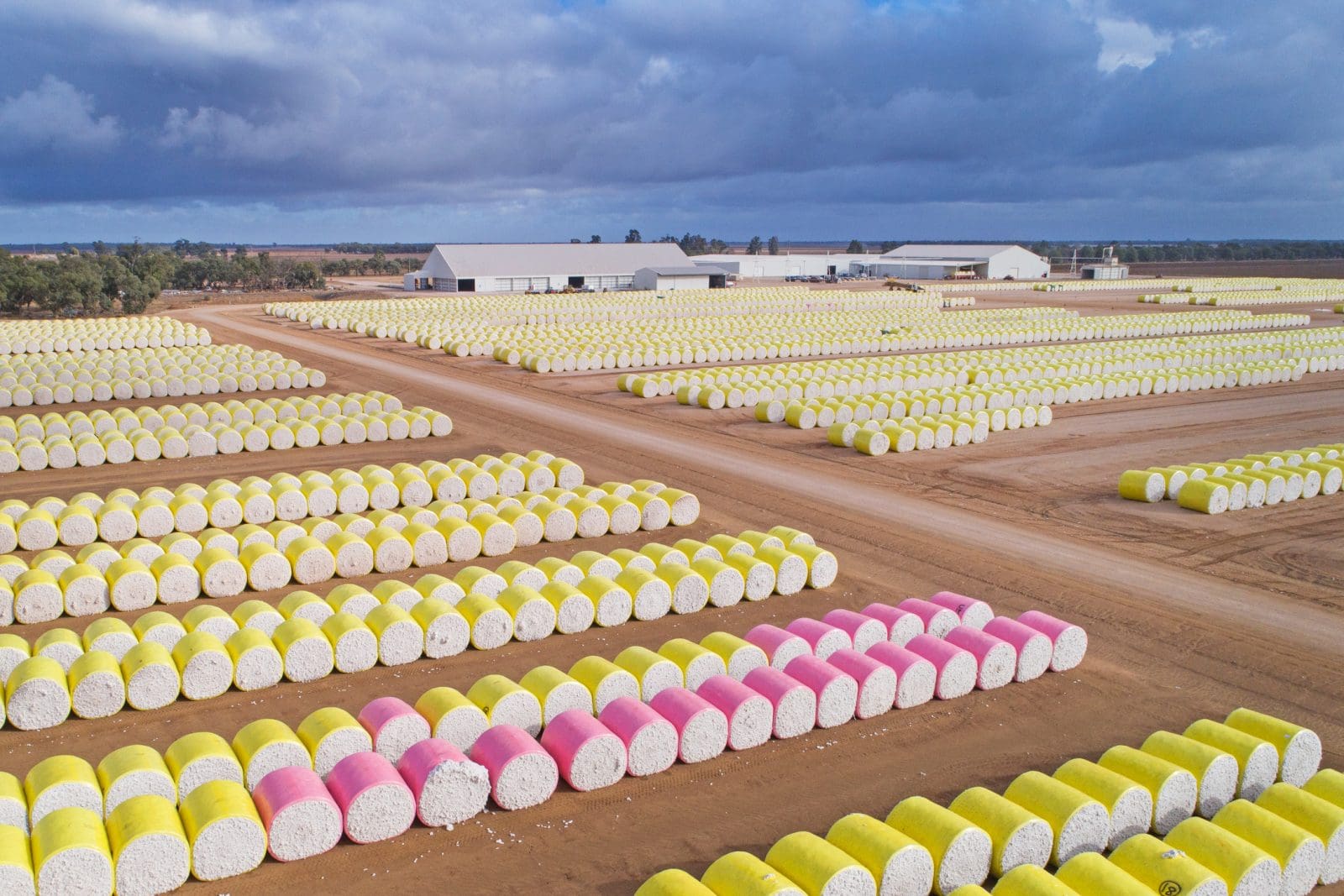
The Southern Cotton gin at Whitton near Griffith. Photo: Southern Cotton
THE AREA area planted to cotton in central and southern New South Wales this summer is down an estimated 37 per cent on last year due to limited availability of affordable water, according to latest industry figures.
The drop is not expected to hamper the long-term growth of cotton in the southern half NSW, or the sector’s viability in the Macquarie Valley, but points to the high value of tradable water in a state still in the grip of drought.
The biggest demand for allocation in southern NSW this season has come from permanent plantings, mostly nut trees, which have non-negotiable water needs.
While prices for cotton, and also rice, are high, Bayer’s regional business manager Luke Sampson said water has gotten expensive, and has become an increasingly attractive commodity to trade in preference to growing cash crops.
“The price per megalitre was over $400 two weeks ago, when it’s been below $100 in the past,” Mr Sampson said.
“Permanent plantings have put a new base into water demand, and it’s not going to go down, which means the price of water won’t be dropping to where it used to trade.”
Bayer’s figures put area planted to cotton in the Lachlan at 12,986 hectares, the Macquarie at 19,613ha of irrigation and 867ha dryland, the Murray at 3192ha and the Murrumbidgee at 44,435ha.
Those figures include area from 19 first-time growers in southern valleys.
“It’s great to see the interest continue to grow as farmers seek a higher return on their water during this period of very low allocations.”
Cereals weigh in
Extremely high wheat and barley prices throughout much of this year, and a lack of in-crop rain, have prompted some southern NSW growers to use a portion of their irrigation allocation on winter cereals typically grown as dryland crops.
“Irrigated cereals have been profitable this year, and some growers have used two or three waterings to get a yield of 5-8 tonnes per hectare,” Griffith-based Ag N Vet agronomist James Kanaley said.
“Even if that wheat was going 10-11.5 per cent protein, it’s still been making good money.”
The trade-off has been less allocation to carry over into the current watering season for cotton.
Money in water
Mr Sampson said this, when added to a general-security allocation of 7pc or less, has encouraged some growers to sell their 2018-19 water rather than buy the extra they would need to produce a summer crop.
“Some growers aren’t planting anything, and most of the larger growers have pulled back in area because they didn’t have enough water to plant the area they would have liked.”
Steep drop in Macquarie
Mr Sampson said cotton area in all the southern valleys — the Lachlan, the Murrumbidgee and the Murray — was down, and the Macquarie’s been cut back the most.
“The Macquarie has lost carryover as well, and in NSW the Murray system is feeling it the most, because they’re still on zero allocation, when there was an assumption they would have gotten some water by now.”
Auscott farm manager and Macquarie Cotton Growers’ Association president Sinclair Steele said the Macquarie’s area this year has been cut by close to half from 35,000ha last year.
“There’s a lot of concern for people who have forward sold on the carryover they had, and now 30pc of that has been withdrawn.”
“On top of that, we’ve got our dam network, where a bulk water transfer is normally made from Windamere Dam to our main storage, Burrendong.
“That was meant to happen last month and it hasn’t happened yet, so that’s got some people feeling pretty nervous.”
Hope for increased allocations
Significant inflows into NSW dams from Burrendong to the Murray Valley could well boost irrigation allocations over summer, and bolster yields for crops which were planted by the end of October.
“State Water is being fairly conservative in their allocations, because they have to consider requirements for town water and high-security water.”
Southern NSW is currently home to four gins: Auscott at Hay; Namoi at Hillston; the recently expanded Rivcott at Carrathool, and Southern Cotton at Whitton.
At Coleambally, Southern Cotton and Queensland Cotton are building the region’s fifth gin, which Southern Cotton said was still on track to open in time for ginning in 2020.
Grain Central: Get our free daily cropping news straight to your inbox – Click here

HAVE YOUR SAY